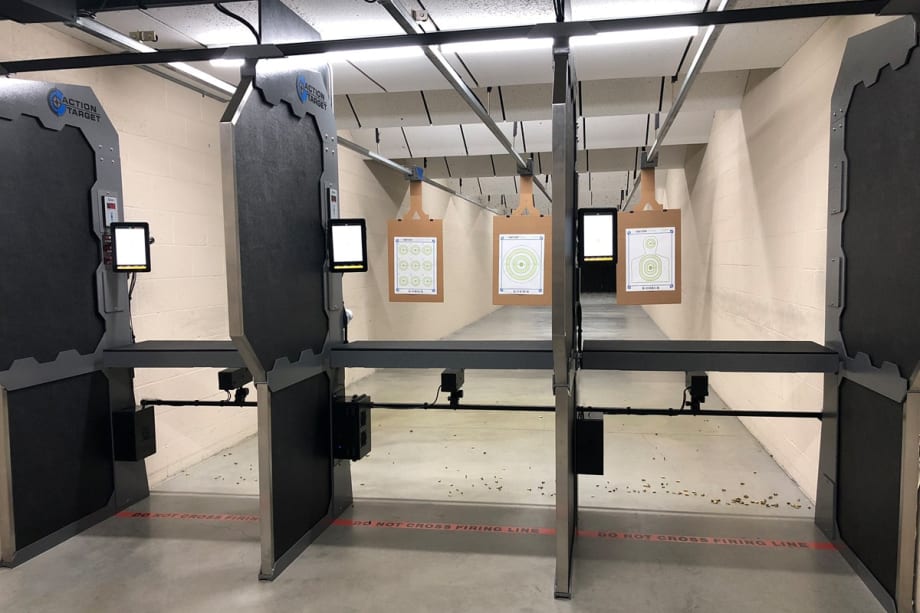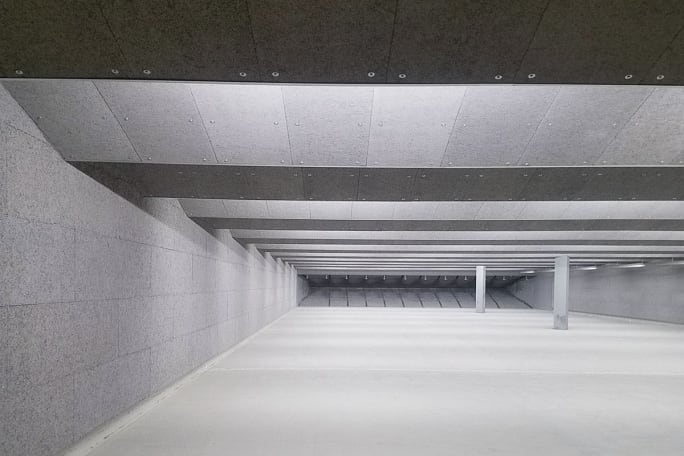A newer benefit is protection from drones. Bergiadis says more agencies have expressed interest in canopies for this reason. They don’t want people using drones to spy on officers’ tactics, or their “motions and methods,” to gain an advantage in an active shooter incident, for example.
Ventilation is another safety concern for ranges. Shortcuts might have been taken because the people who installed the equipment weren’t knowledgeable enough or because of a desire to meet budget. “Ventilation is huge,” Bergiadis says. The airflow needs to move 75 feet per minute downrange, or it becomes hazardous for the shooters and instructors due to lead being inhaled and entering the blood stream. So if that is a problem with your range, take the necessary actions to correct it immediately.
Ballistic containment is of course always a top priority. It should go without saying that a range should be designed so bullets cannot escape the facility. But design flaws do happen, and there are ways to correct them. “There was a range a few years back, and neighbors kept finding metal fragments in their backyards,” shares Bergiadis. “They shut down the facility until they fixed it.”
When it comes to appropriate range access and egress to maintain safety, again, it should be simple. First of all, don’t position the entrance at the bullet trap. “Most architects understand that, but sometimes you’ll see it,” Bergiadis says. “You need to come in through a set of doors behind the firing line and then walk down inside the range.
However you decide to upgrade your range, it’s prudent to set it up as best you can to benefit officers for years to come.














